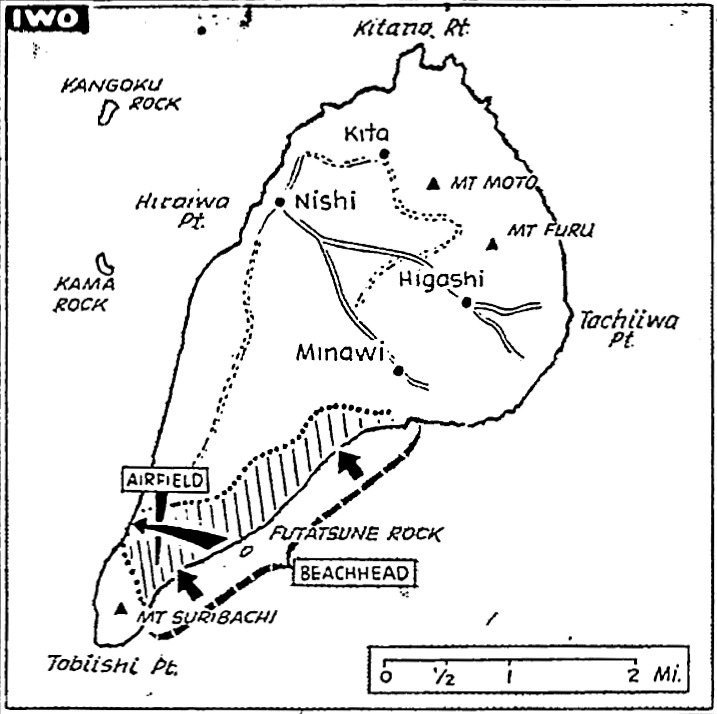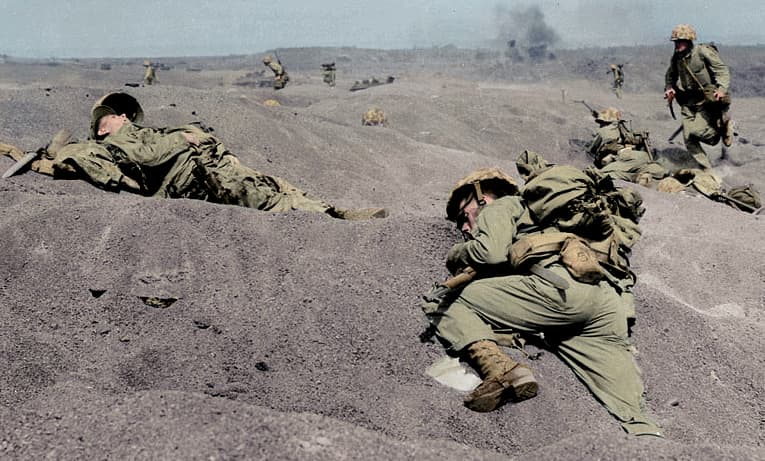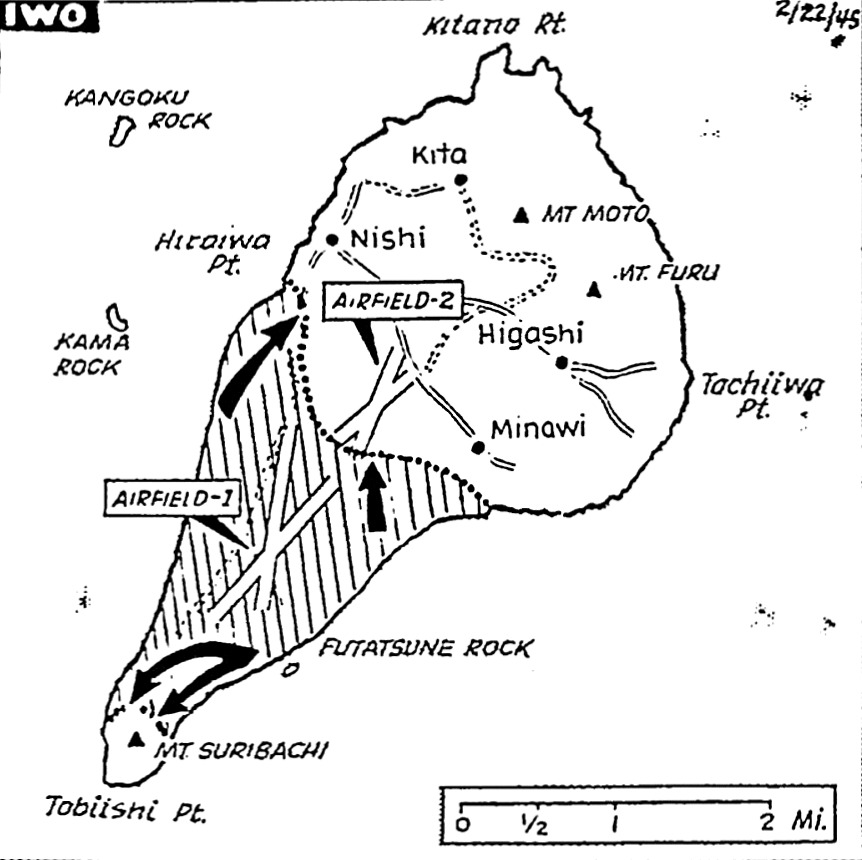Who will lead drive on Japs still mystery
Iwo invasion poses command question
WASHINGTON (UP) – The invasion of Iwo Island, 675 miles from Japan, put U.S. forces well within the enemy’s inner defense zone today and revived Washington’s No. 1 military mystery:
Will Gen. Douglas MacArthur, Adm. Chester W. Nimitz or someone else command the coming grand assault against the Japs and lead the Americans in the victory march through the streets of Tokyo?
Military observers have asked that question repeatedly in the past, but never before has an answer seemed so imperative. The island-hopping phase of the Pacific war is rapidly nearing an end, and there is sharp speculation here as to whether all U.S. forces in the Pacific are to be combined for the next step.
May be settled
President Roosevelt and Prime Minister Churchill may have settled that point during their recent conferences. If so, they gave no indication of it in their public announcements.
But the fact that the final battle against Japan will be land action, most likely on the Asiatic mainland, has led many observers here to pick an Army man as the most probable choice if the post of supreme commander in the Pacific is created.
Gen. MacArthur has met and defeated the Japs in both jungle and open country. Though his resources have often been limited, he has inflicted many times more casualties on the enemy than his own forces have suffered.
Nimitz also brilliant
Adm. Nimitz also has established a brilliant record. Over long and bloody paths, Adm. Nimitz and Gen. MacArthur have carried the American flag so close to the heart of the Jap resistance that a unification of command appears inevitable.
Adm. William F. Halsey, commander of the Third Fleet, was in Washington for consultation. He said at a press conference that the Army and Navy would go to Tokyo together.
Of Gen. MacArthur, Adm. Halsey said: “We’ve worked together for more than two years and I have the greatest respect and admiration for him.”
Started at Port Moresby
Gen. MacArthur began his return to the Philippines when his men halted the Jap advance before Port Moresby, New Guinea. In a campaign that is regarded as brilliant for both planning and execution, he swept on through British and Dutch New Guinea, past the Admiralties, Halmaheras and finally into Luzon. The capture of Manila and strategic portions of Luzon sealed the fate of the Philippines although much mopping-up work remains.
When Manila fell, Gen. MacArthur said that one stage of the Pacific war had ended and that “on to Tokyo” was the next motto.
MacArthur made bid
“We are ready in the veteran and proven command when called upon.” he said in a frank bid for the Tokyo assignment.
While Gen. MacArthur was driving upward from the Southwest Pacific, Adm. Nimitz was pushing across the central area. After the conquest of Guadalcanal, Adm. Nimitz’s forces – Marines and Army troops as well as the mighty Pacific Fleet – took the Gilberts, the Marshalls, the Marianas, the Palaus. His fleet units covered Gen. MacArthur’s invasion of the Philippines. Between the various invasions, Adm. Nimitz’s Pacific Fleet met and defeated the Imperial Japanese Navy in a series of decisive actions.
Fleet’s job comes first
It will be the job of the fleet to land American troops on Jap soil and the Chinese coast. Indeed, until that stage in the war is reached, it may be that a Navy man will be in command. But once the landings are made, the Army probably would take over.
Some conservative observers here believe the assaults against the Jap islands and the Chinese mainland may have to await the end of the European war. If this should prove so, the question of a combined command may not arise.
After Germany falls, millions of additional troops will be available for service im the Pacific, and the MacArthur and Nimitz commands each could be built into an independent force of considerable strength, each with a specific job.



